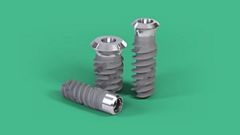Products and solutions
Straumann® – the global gold standard in implant and esthetic dentistry.
Education & Enablement
World class Medical Education based on scientifically proven protocols to enhance your daily practice.
Science
We are committed to research and scientific evidence in the field of implant dentistry and oral tissue regeneration.
About
Straumann is committed to being your global partner of choice for premium tooth replacement solutions.
- Home
- Products and solutions
- Services
- Education and enablement
- Science
- About
- Articles




